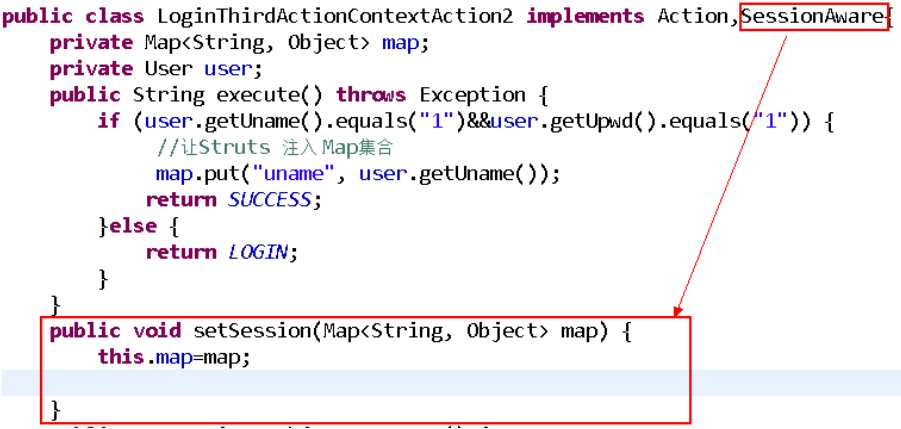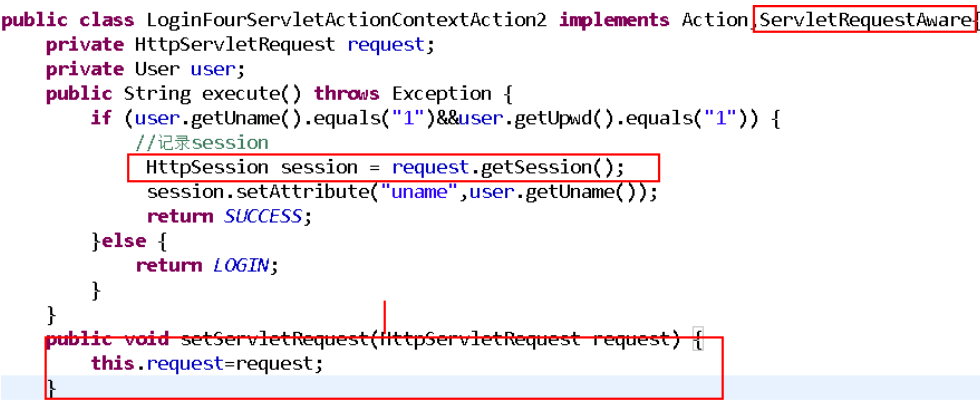struts2 個人隨筆
1.Struts 2及其優勢
Struts 2是一個MVC框架,以WebWork框架的設計思想為核心,吸收了Struts 1的部分優點
Struts 2擁有更加廣闊的前景,自身功能強大,還對其他框架下開發的程式提供很好的相容性
步驟1: 配置web.xml檔案

<filter>
<filter-name>struts2</filter-name>
<filter-class>org.apache.struts2.dispatcher.ng.filter.StrutsPrepareAndExecuteFilter</filter-class>
</filter>
<filter-mapping>
<filter-name>struts2</filter-name>
<!-- 攔截所有的action -->
<url-pattern>/*</url-pattern>
</filter-mapping>
步驟2:在src下建立名稱為struts.xml的配置檔案

<?xml version="1.0" encoding="UTF-8" ?>
<!DOCTYPE struts PUBLIC
"-//Apache Software Foundation//DTD Struts Configuration 2.3//EN"
"http://struts.apache.org/dtds/struts-2.3.dtd">
<struts>
<!-- 配置檔案中只要新增以下配置,那麼以後修改配置檔案不用重啟tomcat -->
<constant name="struts.devMode" value="true" />
<package name="default" namespace="/" extends="struts-default">
<!-- 第一個action的例子 -->
<action name="helloWorld" class="cn.happy.action.HelloWorldAction">
<result name="success">
index.jsp
</result>
</action>
<!-- 登陸的action -->
</package>
<!-- Add packages here -->
</struts>
步驟3:編寫HelloWorldAction

package cn.happy.action;
import com.opensymphony.xwork2.Action;
public class HelloWorldAction implements Action{
private String name ;
private String message;
public String execute() throws Exception {
setMessage("Hello"+getName());
return "success";
}
}
步驟4:建立index.jsp頁面

<div>
<h1>
<!--顯示Struts Action中message的屬性內容-->
<s:property value="message"/>
</h1>
</div>
<div>
<form action="helloWorld.action" method="post">
請輸入您的姓名:
<input name="name" type="text" />
<input type="submit" value="提交" />
</form>
</div>

步驟5:通過瀏覽器訪問

點選提交後結果

2.struts配置檔案說明
<!-- 配置檔案中只要新增以下配置,那麼以後修改配置檔案不用重啟tomcat --> <constant name="struts.devMode" value="true" />
一個警告的解決
問題描述:No configuration found for the specified action: 'login.action' in namespace: ''. Form action defaulting to 'action' attribute's literal value.
解析:
<s:form action="Login" method="post" namespace="/"> or <s:form action="/Login" method="post" >
3.登陸案例
步驟一:struts.xml檔案

<!-- 登陸的action -->
<action name="login" class="cn.happy.action.LoginAction">
<result name="success">
login/success.jsp
</result>
<result name="login">
login/login.jsp
</result>
</action>

步驟二:LoginAction類的建立

package cn.happy.action;
import com.opensymphony.xwork2.Action;
public class LoginAction implements Action{
private String username = "";
private String password = "";
public String execute() throws Exception {
if (username.equals("1")&&password.equals("1")) {
return SUCCESS;
}else {
return LOGIN;
}
}
}

步驟三:建立登陸介面
<s:form name="form1" namespace="/" method="post" action="login">
請輸入使用者名稱: <s:textfield name="username"></s:textfield> <br/>
<s:textfield name="password"></s:textfield><br/>
<s:submit value="登陸"></s:submit>
</s:form>
步驟四:在瀏覽器中訪問


4.登陸案例強化:關於自動裝配問題
在開發中,通常會以JavaBean方式儲存資料。所以可以有如下寫法
Action類

Jsp頁面

在servlet中可以通過servlet API來獲取Session,在Struts中如何獲取Session呢?
解析:將使用者名稱放入session 兩種方案
1. 與Servlet API解耦的訪問方式
--->01.使用ActionContext類獲取ServletAPI物件對應的Map物件
--->02.Struts2向Action注入ServletAPI物件對應的Map物件
2. 與Servlet API耦合的訪問方式
解耦方式:
方案一: 對Servlet API進行封裝 ,藉助ActionContext
提供了三個Map物件訪問request、session、application作用域
通過ActionContext類獲取這三個Map物件
Object get("request")
Map getSession()
Map getApplication()
案例:登陸成功後,記錄使用者名稱到Session中,登陸失敗,跳會登陸頁面
步驟一:書寫Action

方案二:向Action中注入ServletAPI物件對應的Map物件
步驟一:書寫Action

耦合方式:
方式一:通過ActionContext的子類ServletActionContext實現

方式二:向Action例項注入Servlet API物件

2.在Struts中如何儲存登陸使用者名稱 ,用Session機制
解析:在Servlet中如何獲取到Session物件?
----->request.getSession()
在Struts中如何獲取session物件
--->ActionContext類
在Struts中通過注入,核心介面 SessionAware: setSession(Map<String,Object> map);
